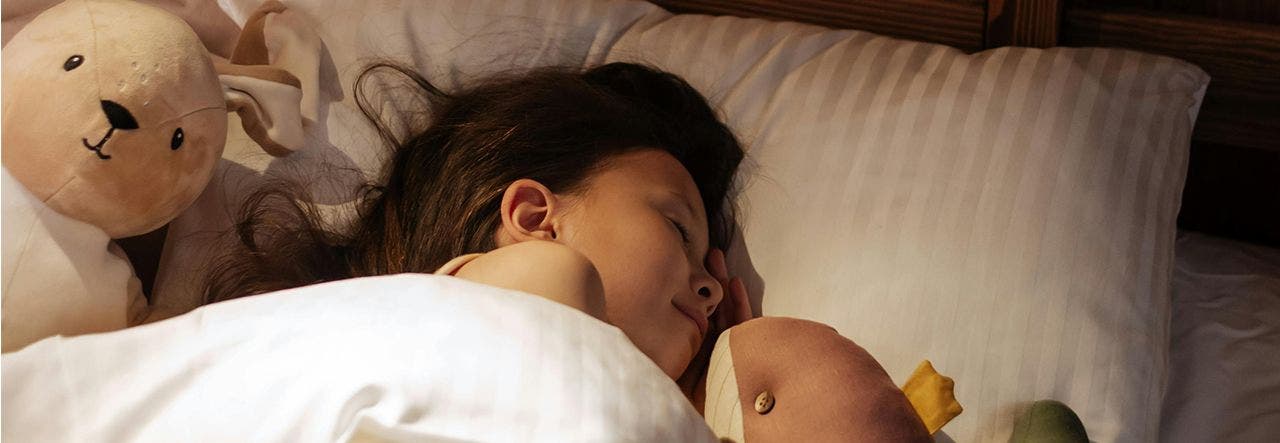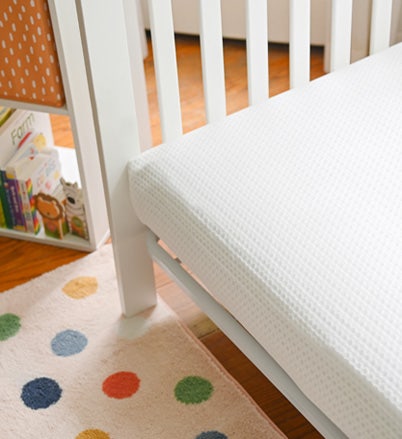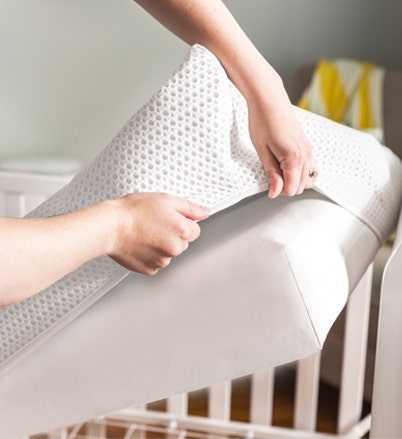Are Your Little Ones Sleeping on Fiberglass? (And Is That Okay?)
As parents, we spend countless hours researching the safest products for our little ones. From car seats to sippy cups, every choice matters.
But one safety concern may fly under the radar: what's actually inside our children's mattresses. Many mattresses, including those made for babies, contain a bunch of hidden ingredients. A common one is something you've probably heard of called fiberglass.
While fiberglass can be used to meet certain safety standards, there's more to the story (and better alternatives) that parents should know about. Here's what parents should know about fiberglass in mattresses.
What Is Fiberglass and Why Is It Used in Mattresses?
When you hear "fiberglass," you probably think of insulation – not your kiddo's mattress! This material is made from tiny strands of glass and reinforced plastic, and it has become a common ingredient in many mattresses, especially budget-friendly ones.
Why? Well, mattresses need to meet certain safety standards for fire resistance. Since 2007, all mattresses sold in the U.S. must pass tests showing they can resist catching fire. Fiberglass is an inexpensive yet effective way for manufacturers to meet these requirements. If a mattress with fiberglass catches fire, the glass fibers are designed to melt and create a barrier that slows down the spread of flames. But, while fiberglass might help with fire safety, it unfortunately comes with its own set of concerns for our littles.
Is Fiberglass Safe in Mattresses?
The safety of fiberglass in mattresses is controversial. See, fiberglass is supposed to stay safely contained in a perfectly intact mattress, but real life isn't always perfect.
If a mattress cover gets damaged or removed, those tiny glass fibers can escape. When they do, they become unwelcome guests, potentially causing immediate and long-term health concerns. Short-term effects can include:
- Itchy, red, irritated skin
- Eye irritation and redness
- Coughing and breathing difficulties
- Widespread contamination of your home


Researchers have found that long-term exposure to fiberglass can be even more concerning. Over time, these persistent fibers might cause:
- Ongoing respiratory problems, including wheezing and shortness of breath
- More serious breathing issues for children with respiratory conditions
- Chronic skin problems that could develop into dermatitis
- Continued eye irritation and discomfort
Some families have had to professionally clean their homes or even replace furniture and clothing after a fiberglass incident. That's a headache no parent needs!
How to Tell If Your Child’s Mattress Contains Fiberglass
A mattress might contain fiberglass even if it's not clearly labeled. However, there are several ways to check if your little one's mattress contains this hidden ingredient.
Start with the mattress tag, and look for these terms:
- "Glass fiber"
- "Glass wool"
- "Fiberglass"
- "Glass-reinforced plastic"
- "Silica"
A parent-friendly tip: if your mattress warns "do not remove cover" or "warranty void if cover is removed," that's often a red flag that fiberglass might be lurking inside.
If you’re not sure about what you’re reading, try these steps:
- Check the manufacturer's website or care manual
- Contact the company directly (a reputable company will be happy to tell you what's in their mattresses!)
- Look at the price point (very inexpensive mattresses often use fiberglass as a cost-cutting measure)
Keep in mind that even if a mattress has a CertiPUR-US® certification, that only tells us about the foam inside. It doesn’t tell us whether it contains fiberglass. Sometimes, mattresses might contain fiberglass without listing it clearly on the label.
What Are Alternatives to Fiberglass in Mattresses?
There are several safer ways to make mattresses meet fire safety standards without using fiberglass. Wool, for example is naturally flame-resistant thanks to its high keratin and moisture content. (However, wool is a highly common allergen, so might not be the best fit for a kids mattress – you might not know what all your kiddo's allergies are yet when they're so young!)


Polyester and plant-based materials like certain types of polyethylene can be great materials for creating an effective flame barrier while maintaining comfort. Just make sure your child's mattress is EWG VERIFIED® for chemical safety if choosing a mattress made with synthetic materials.
These materials are able to meet all the same safety standards as fiberglass without the worry of tiny glass fibers escaping. Peaceful sleep should be just that – peaceful! – for both little ones and parents!
Why Does Avoiding Fiberglass Matter Especially for Little Ones?
Our kiddos are more vulnerable to fiberglass exposure than adults. That's why the mattress choice for your little one's room matters so much! Their tiny lungs work differently from ours, and research shows they may retain more glass fibers when exposed.
In 2019, California investigated a case where a 6-year-old developed ongoing skin and breathing problems traced back to fiberglass from their mattress. The contamination was so bad, the family had to throw out their carpet and clothing. It’s a stark reminder that what’s inside a mattress doesn’t just stay inside – it can impact your entire home and, more importantly, your child’s well-being in ways you might never expect.
How Lullaby Earth Ensures Safety and Peace of Mind
Lullaby Earth crib mattresses and kids mattresses pass all government flammability standards without using any flame retardant chemicals or fiberglass. Ever.


Many crib mattresses on the market contain some form of flame retardants – whether it's phosphates, boric acid, brominated chemicals or fiberglass. Some even market these as "natural" without telling you exactly what's inside. We believe in complete transparency, and think the safest chemical flame retardants are none at all!
We're on a mission to create truly safer sleep for your little ones, at prices any family can afford. That's why our mattresses meet every government safety standard while doing our best to keep questionable materials far away from your baby's sleep space.
Sweet Dreams and Safer Sleep
As parents, we want our little ones' sleep spaces to be havens of comfort and safety. No parent should have to wonder if their child's mattress might be hiding hazards. So, while fiberglass has become a common solution for meeting fire safety standards, it doesn't have to be your only option. There are gentler ways to keep your kiddos safe while they dream.
Want to learn more about creating the safest sleep space for your little ones? Check out these helpful posts:

 Baby
Baby
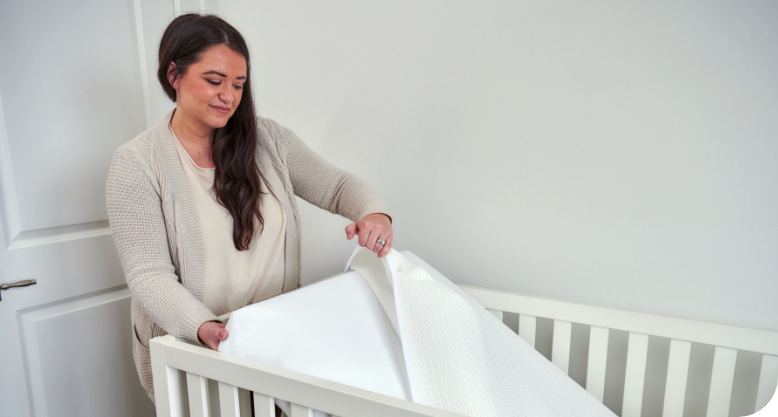
 Kids
Kids
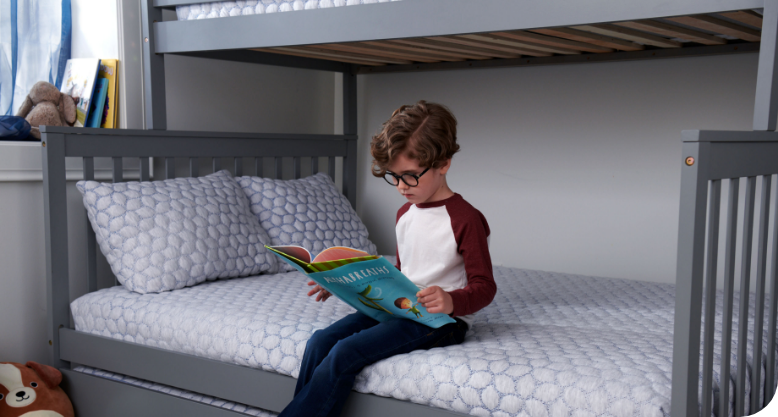
 Learn
Learn
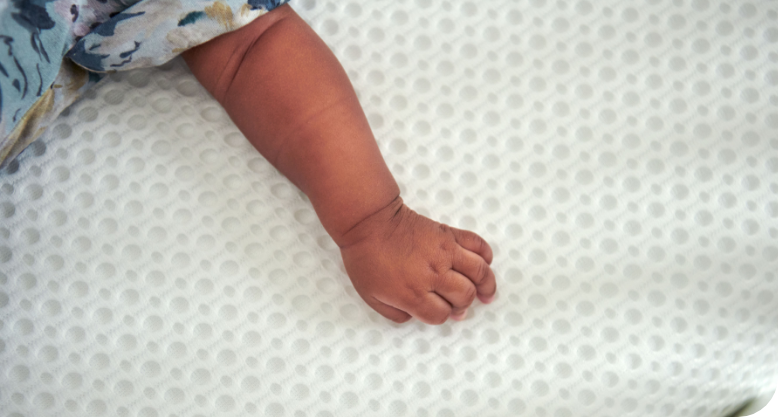
 FIND A STORE
FIND A STORE CONTACT
CONTACT